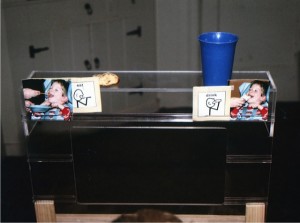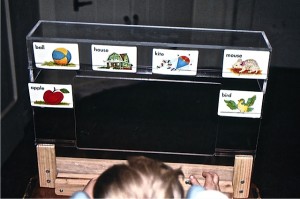Several months ago an announcement was made in church that more or less left me in a state of shock. It took a bit for the information to sink in but by the time I drove out of the parking lot I was overcome with great sadness. The announcement – Pastor Mariellen was to be transferred to another church in July. (Please review Journey of Faith, August 12, 2014 to refresh your memory about my experience with Pastor Mariellen.)
I never thought the news of a pastor being transferred would affect me the way it has. I guess I was totally in shock because LAUMC has a history of senior pastors staying long term, at least since I have been a member here. The news caused me to sink into a state of depression and a great sense of loss.
I was in a zombie state for several days. Tears came easily and sleepless nights were many. To add to my confused feelings was the possibility of my best friend moving out of the area and changes in the care of one of my sons. So many challenges hitting all at once, but I had to continue taking care of the family.
Feelings of anger began to take over. I have no idea why Pastor Mariellen was to leave nor did I have any control over this decision. It really doesn’t matter because the decision had already been made. I had feelings of being neglected, empty and even worthless. Why couldn’t people understand how important it was to me to have a pastor I could understand and communicate with so easily? I know I am only one or two members in this large congregation who depend on interpreters and ASL and should not take it personally, but it still felt like I was being singled out. I’m sure most people have no idea that for more than 64 years I have had to depend totally on speechreading to comprehend conversations with my pastors. With Pastor Mariellen, I didn’t need to use my hearing aids to make sure I was using my voice for her to understand me. We could sit and sign. It was so comforting.
I felt like I had even let Pastor Mariellen down by not being able to recruit more deaf people to come to LAUMC. Sadly, those I invited were not interested or were of different faiths. There is not a high population of signing deaf in this area and I knew she was eager to connect with more signing deaf and wanted them to be a part of her ministry. It just never happened.
I also felt angry with myself for not taking better advantage of her skills while she was at LAUMC. It’s not like we met up every week to chat or discuss personal issues. In fact, it was more like once every three to four months that we made time to sit down for half an hour or so. What I have truly lost is the comfort of knowing my pastor, who was fluent in ASL, was just a few minutes drive from home.
As I grieved I decided to make a special gift for her, something that would remind 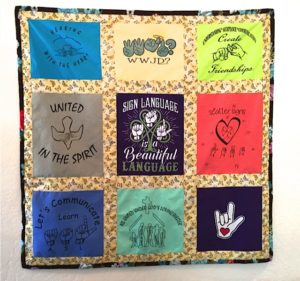 her of those of us who claimed a small part of the front corner in the sanctuary. I allowed myself to shed some tears as I put together her gift. Most of the t-shirts I used in the blanket were designed by my friend Beth and I for the United Methodist Congress of the Deaf where I first met Pastor Mariellen close to 30 years ago. Here is a photo of the project that helped me some with the healing process of loss.
her of those of us who claimed a small part of the front corner in the sanctuary. I allowed myself to shed some tears as I put together her gift. Most of the t-shirts I used in the blanket were designed by my friend Beth and I for the United Methodist Congress of the Deaf where I first met Pastor Mariellen close to 30 years ago. Here is a photo of the project that helped me some with the healing process of loss.
I would like to thank Pastor Mariellen for accepting the position at LAUMC as senior pastor, even if the appointment was not long enough for me. Thank you for sitting on the cold, concrete floor to interpret a service when there was no interpreter scheduled. Thank you for inviting me to sign a favorite Christmas hymn at the Christmas Day service. Thank you for supporting my family through some extremely emotional times. Thank you for digging up some of my purple iris bulbs and taking them along with you to your new home. May they grow and bloom with your care.
We now have a new senior pastor at LAUMC. I have only shook her hand once but she sent me an email inviting me to meet with her tomorrow. So once again, I will turn on my hearing aids, learn her flow of speech, try to find a good position and lighting, and all that goes along with speechreading. I pray I can understand without too much trouble and be open-minded enough to establish a positive relationship with her.

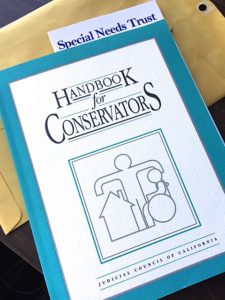 I had been working with a lawyer friend sporadically for about three years with the idea of transferring my responsibility of conservatorship to an agency for six of my sons. Sadly, my lawyer friend had to take early retirement due to health issues and we never completed the goal. The options aren’t that great, according to the instructions given to me, for conservators wanting to end their responsibilities. To name a couple, either the conservatee or conservator needs to die or the conservator needs to get into trouble and be removed by the court. Well, none of these three options has happened to date. Therefore, I have reached out to a new lawyer for assistance but…..
I had been working with a lawyer friend sporadically for about three years with the idea of transferring my responsibility of conservatorship to an agency for six of my sons. Sadly, my lawyer friend had to take early retirement due to health issues and we never completed the goal. The options aren’t that great, according to the instructions given to me, for conservators wanting to end their responsibilities. To name a couple, either the conservatee or conservator needs to die or the conservator needs to get into trouble and be removed by the court. Well, none of these three options has happened to date. Therefore, I have reached out to a new lawyer for assistance but…..
 conservatorship or Special Needs Trust issues in the comments below.
conservatorship or Special Needs Trust issues in the comments below.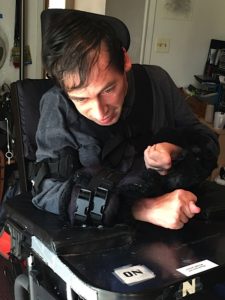
 ral loss that was progressive. By the time I was a junior in college the audiologist and I decided it was worth a try to use a hearing aid. My first hearing aid was a body aid with a wire going from the box or case that contains the electronic amplifier, batteries, and controls to the receiver and earmold. I used only one earmold in the left ear and wore the box part under my shirt, which can be annoying if a person can actually hear the rub of clothing against the amplifier.
ral loss that was progressive. By the time I was a junior in college the audiologist and I decided it was worth a try to use a hearing aid. My first hearing aid was a body aid with a wire going from the box or case that contains the electronic amplifier, batteries, and controls to the receiver and earmold. I used only one earmold in the left ear and wore the box part under my shirt, which can be annoying if a person can actually hear the rub of clothing against the amplifier.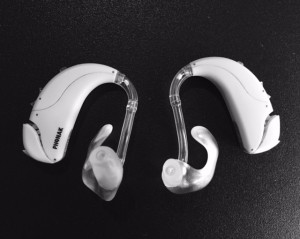 Anyway, after several years of trying to use the body aid and as technology continued to improve, I was fit with two behind-the-ear aids. In fact, I’ve gone through several sets of behind-the-ear aids. Why several sets you may ask?
Anyway, after several years of trying to use the body aid and as technology continued to improve, I was fit with two behind-the-ear aids. In fact, I’ve gone through several sets of behind-the-ear aids. Why several sets you may ask?



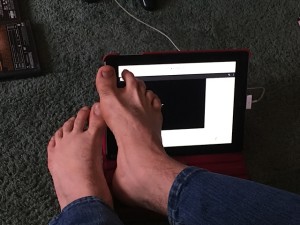
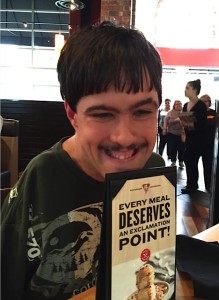
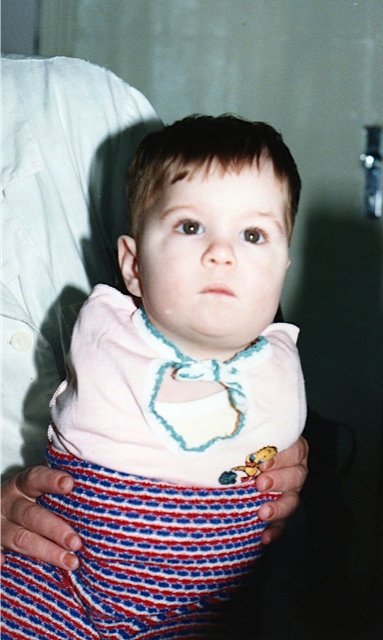 Kolya came from Siberia where he had lived in an orphanage from birth until he arrived in our home at the age of 18 months. We were told he was deaf and that was the primary reason he joined the family. He also is an upper congenital amputee and our family had previously adopted children who were amputees. I did not travel to Russia to bring him home and had never seen him until he came through the front door. Within ten minutes I knew he was not deaf. He responded only to mechanical sounds, like Derek’s suctioning machine, for example. Kolya could barely sit, had never eaten solid foods, and made no eye contact. In many ways I had no experience raising a child like Kolya and I learned quickly there were some gigantic mountains, not little hurdles, we had to climb.
Kolya came from Siberia where he had lived in an orphanage from birth until he arrived in our home at the age of 18 months. We were told he was deaf and that was the primary reason he joined the family. He also is an upper congenital amputee and our family had previously adopted children who were amputees. I did not travel to Russia to bring him home and had never seen him until he came through the front door. Within ten minutes I knew he was not deaf. He responded only to mechanical sounds, like Derek’s suctioning machine, for example. Kolya could barely sit, had never eaten solid foods, and made no eye contact. In many ways I had no experience raising a child like Kolya and I learned quickly there were some gigantic mountains, not little hurdles, we had to climb. learned to walk, he could run for miles and always in his bare feet because he wouldn’t wear shoes. He reminded me of a deer being free to jump fences or run across highways without being hit. I honestly don’t know how he survived some of his adventures. He had no fears, other than water running in the sink or bathtub.
learned to walk, he could run for miles and always in his bare feet because he wouldn’t wear shoes. He reminded me of a deer being free to jump fences or run across highways without being hit. I honestly don’t know how he survived some of his adventures. He had no fears, other than water running in the sink or bathtub.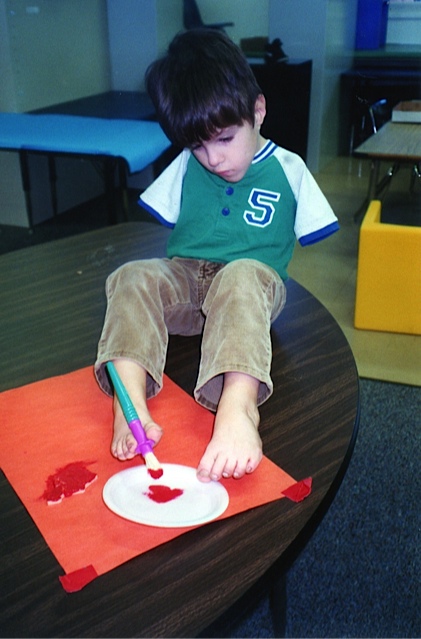 he plopped himself down on the floor, held the paper in place with his left foot and the pencil with his right foot, and wrote his name. By this time the school had called 911 and the woman also called 911 and the connection was made the calls were about the same child. He was returned to his school safe and sound.
he plopped himself down on the floor, held the paper in place with his left foot and the pencil with his right foot, and wrote his name. By this time the school had called 911 and the woman also called 911 and the connection was made the calls were about the same child. He was returned to his school safe and sound.



